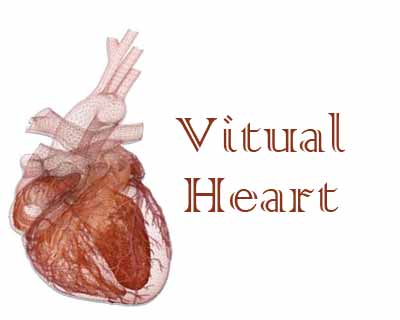- Home
- Editorial
- News
- Practice Guidelines
- Anesthesiology Guidelines
- Cancer Guidelines
- Cardiac Sciences Guidelines
- Critical Care Guidelines
- Dentistry Guidelines
- Dermatology Guidelines
- Diabetes and Endo Guidelines
- Diagnostics Guidelines
- ENT Guidelines
- Featured Practice Guidelines
- Gastroenterology Guidelines
- Geriatrics Guidelines
- Medicine Guidelines
- Nephrology Guidelines
- Neurosciences Guidelines
- Obs and Gynae Guidelines
- Ophthalmology Guidelines
- Orthopaedics Guidelines
- Paediatrics Guidelines
- Psychiatry Guidelines
- Pulmonology Guidelines
- Radiology Guidelines
- Surgery Guidelines
- Urology Guidelines
3D Virtual Heart to Predict Sudden Cardiac Death Risk

New York : A team of researchers from Johns Hopkins University has developed a non-invasive 3D virtual heart to help doctors determine whether a patient faces the risk of a life-threatening arrhythmia and needs a defibrillator implant.
When electrical waves in the heart run amok in a condition called arrhythmia, sudden death can occur.
To save the life of a patient at risk, doctors currently implant a small defibrillator to sense the onset of arrhythmia and jolt the heart back to a normal rhythm.
But how should doctors decide which patients truly need an invasive, costly electrical implant that is not without health risks of its own?
In a proof-of-concept study published in the journal Nature Communications, the team reported that its new digital approach yielded more accurate predictions than the imprecise blood pumping measurement now used by most physicians.
"Our virtual heart test significantly outperformed several existing clinical metrics in predicting future arrhythmic events," said Natalia Trayanova, the Murray B. Sachs professor of biomedical engineering.
"This non-invasive and personalised virtual heart-risk assessment could help prevent sudden cardiac deaths and allow patients who are not at risk to avoid unnecessary defibrillator implantations," Trayanova explained.
For the study, Trayanova's team formed its predictions by using the distinctive magnetic resonance imaging (MRI) records of patients who had survived a heart attack but were left with damaged cardiac tissue that predisposes the heart to deadly arrhythmias.
The study involved data from 41 patients who had survived a heart attack and had an ejection fraction a measure of how much blood is being pumped out of the heart of less than 35 percent.
All 41 patients in the study received the implants because of their ejection fraction scores.
The Johns Hopkins team invented an alternative to these scores by using pre-implant MRI scans of the recipients' hearts to build patient-specific digital replicas of the organs.

Disclaimer: This site is primarily intended for healthcare professionals. Any content/information on this website does not replace the advice of medical and/or health professionals and should not be construed as medical/diagnostic advice/endorsement or prescription. Use of this site is subject to our terms of use, privacy policy, advertisement policy. © 2020 Minerva Medical Treatment Pvt Ltd